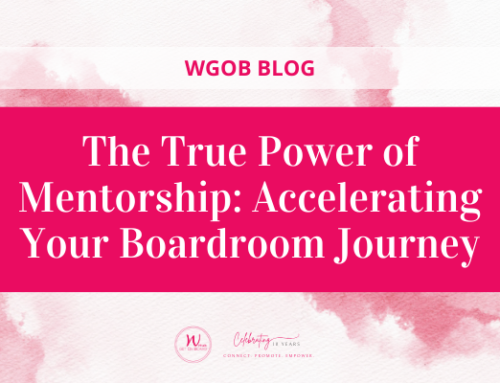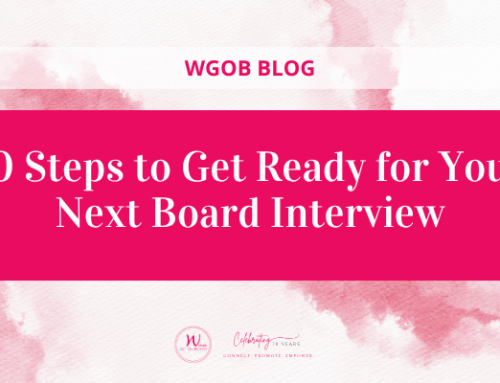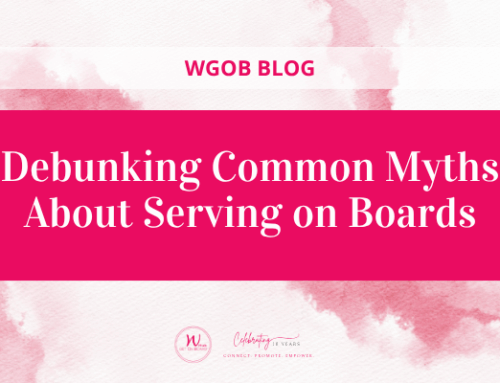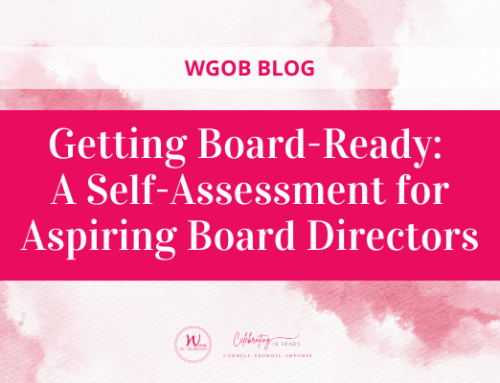Giving back by serving on a Not-For-Profit (NFP) Board helps you to get involved in your community in a meaningful way. Not only can it be a very rewarding experience, it can help build your network by connecting you to new people and exposing you to new sectors and/or industries. In addition, NFP Boards can be helpful in getting governance education.
In November 2015 we held our Getting Involved in Your Community Roundtable Event with moderator Lori O’Neill, Corporate Director and Growth Company Advisor, and panellists Rebecca Mooney, Vice President and Head of Brand and Marketing at RBC Wealth Management, and Elaine Roper, Corporate Director and President of Think Company Inc.
Here are some of their shared insights on serving on not-for-profit boards:
From volunteer to not-for-profit board member
Prepare by understanding what value you will bring. Then, let your network know that you’re interested in joining a NFP Board. Take board members out for coffee to get a feel for what their NFPBoard looks for and what the expectations are. Serving on a committee is also a good way to see how the board operates, their relationship with the organization’s management and for the board to assess your work style—a lot of NPF Boards consider their committee member for open positions.
Choosing the right Not-For-Profit board
Talk to current and past board members to see what the challenges, expectations and commitments are for their board role. Understand the organization’s financial situation and the fundraising events that they run. Use your network to evaluate NFP Board opportunities to make sure that you are a good fit and that you share the same values.
Your skill set
While an ICD.D or C.Dir designation is not essential for serving on a NFP Board, it can be beneficial from both an educational and networking perspective. NFP Boards are about skill sets and fit. Knowing your value proposition helps to showcase your skills and fit to the board.
Fundraising
When you join a NPF Board, it is an unspoken expectation that you will bring your network with you. Some boards have a personal donation commitment and others have a fundraising commitment for their members. If you are not comfortable approaching your network you can offer to make introductions between the people you know who share your interests (including your company) and the organization.
How to exit gracefully
If you can no longer serve on the board the best way to approach your departure is honestly. Speak to the Chair and let them know the reason that you will be leaving. If your position has a set term limit don’t renew your term. Help ease the transition by looking for a successor in advance of your exit.
Tips for getting involved in your community
- Decide how much time you want to invest (the more involved you get the more time you will need to make time to commit).
- Know your own personal limits and don’t overextend yourself — chairing boards and committees is a massive undertaking.
- Set boundaries — if you are a good volunteer more will be asked of you.
- Do your best by giving back to organizations that you’re passionate about.
- Lend your skills to a different sector that you are not familiar with.
- Step up and play an active role. It’s not helpful to the board or to yourself if you can’t fulfil the role.
NFP Boards offer a great way to get involved in your community (especially if you’re new to the area), to learn about a new sector, to seek a new position, to expand your network, to meet new people and to develop new skills. When you do take on new board role, remember to take the time to get to know your fellow board members; they may have other board opportunities that you would be a great fit for!
Women Get On Board is a member-based company that connects, promotes and empowers women to corporate boards. We do this by hosting roundtable events, facilitating workshops and showcasing our members’ personal brands online. Sign up for our mailing list for exclusive events, news and insights.






